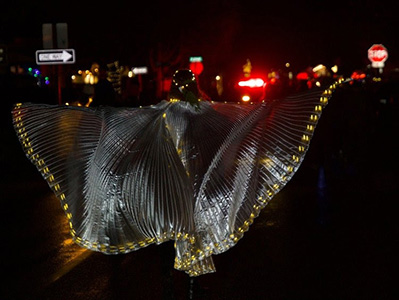||| FROM THE OFFICE OF GOVERNOR JAY INSLEE |||
Transportation is the biggest contributor of carbon emissions in Washington state, and the biggest opportunity to make a difference. The threat of climate change is clear, and Washington state is leading by example to respond.
Washington state will match California’s requirement that cars with model years of 2035 or later must have zero tailpipe emissions to be sold.
That requirement is the “floor,” according to Gov. Jay Inslee’s senior climate advisor, Anna Lising. After all, the state legislature had already set a goal five years more aggressive, aspiring that cars with model years 2030 or newer be electric.
The future of car travel in Washington state will be electric, but is the state’s infrastructure ready? Is the grid ready? Will charging be accessible? Will EVs create jobs?
Lising answered these questions and more in a Q&A now posted to Gov. Jay Inslee’s Medium.
Read the full story on Gov. Jay Inslee’s Medium here.
The town of Steilacoom, WA kicked off this year’s National Drive Electric Week with a gathering of electric car drivers on Sept. 10. Dealerships showed off new models and locals brought their personal EVs to show off. Gov. Jay Inslee drives an electric Kenworth truck assembled in Renton. Photos courtesy of Steilacoom Mayor Dick Muri and Kenworth.
**If you are reading theOrcasonian for free, thank your fellow islanders. If you would like to support theOrcasonian CLICK HERE to set your modestly-priced, voluntary subscription. Otherwise, no worries; we’re happy to share with you.**










Where does all that Lithium for the electric batteries come from?
Oh, yes. from neo-colonial raiding of other third-world countries.
When you have complete electric grids being shut down (Hurricanes etc.) and governors urging people to not use electricity (California)…
I don’t think we are ready for all-electric transportation.
As someone whose primary vehicle has some electric vehicle (on my 3rd one now) for more than 10 years, I think this is a good aspirational goal, though — like any major change — it will also have some challenges.
The longer Medium article does at least acknowledge that grid readiness is a prerequisite. The claim, with some supporting evidence (https://www.energy.gov/sites/prod/files/2019/12/f69/GITT%20ISATT%20EVs%20at%20Scale%20Grid%20Summary%20Report%20FINAL%20Nov2019.pdf) is that we on track to be ready, but we should all educate ourselves and be appropriately critical (trust but verify)
And, until we get star trek transporters powered by free energy, there will be costs, financial, political, and moral. In that sense, electric is no different than petroleum (or fuel-cell, or propane) powered vehicles, other than the specific tradeoffs are different. Some have suggested that the US involvement in the middle east for much of the last century was a cost of our focus on a fossil-fuel based energy economy.
Seriously, though — all the other abstract platitudes aside — my personal view is that electric vehicles are a really good fit for many of the use-cases/scenarios for where we use personal vehicles, especially on places like an island where its rare where range is a big concern. But, for the last 20% (or perhaps 5%, or maybe 30%) of the use-cases, like a long distance road trip into the boonies — it’ll take a lot more infrastructure before we’re really ready to go all-in.
Your mileage may vary :)
–ken
Well said Ken. For the EV curious, if you are wondering what roadtripping is like in an EV – how to plan, where to charge – check out OPALCO’s road tripping webinar today (Thursday) at 5 pm. Three experienced road trippers will be taking your questions, sharing tips and tricks for EV Road Trip Planning. September 29 @ 5 pm via Zoom. Register here: https://opalco.zoom.us/…/tZEkcuGgrTwpGd3CbL8EROMdBJjHgA
I have been driving a Nissan Leaf since 2013, and it has been our go-to car for island driving. We reduced our driving cost by over $1,400 per year. Last year we replaced our other car (fossil-fueled), used for longer range trips, with a VW ID.4 EV, which has 260 mile range. We felt that EVs had evolved enough to use them for extended driving. Over 25 days this past February, we drove around the west, visiting family, stretching our COVID legs, driving over 4,200 miles, charging the EV 42 times, mostly on the Electrify America charging network. All charging was free (3 years free charging included with the VW). Learn more about that trip at the webinar above. It will be fun, informative, with plenty of time for Q&A.
The roadtrip Zoom link above is broken. Try this: https://opalco.zoom.us/meeting/register/tZEkcuGgrTwpGd3CbL8EROMdBJjHgAjQm1km